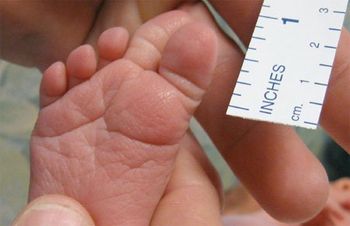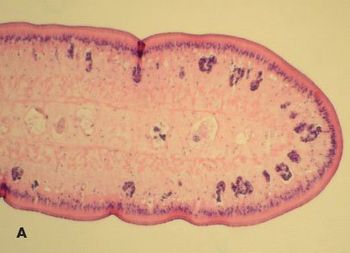
The ninth in a year-long series of commentary reviewing topics published in Contemporary Pediatrics 25 years ago. This month's article reviews the causes and management of hirsutism in adolescent girls.

The ninth in a year-long series of commentary reviewing topics published in Contemporary Pediatrics 25 years ago. This month's article reviews the causes and management of hirsutism in adolescent girls.

A retrospective look at some of the photographs Contemporary Pediatrics received from its photo contest.

Editorial discusses what makes a future pediatrician.

Insulin analogs, advanced insulin pumps, and improved glucose monitoring devices make it easier to achieve glycemic control while decreasing the risk of hypoglycemia.

FDA thinks its important for the health of both a pregnant mother and her fetus to learn about a drug?s adverse effects: but is it?

Two studies show the lifelong impact of sexuality and body image on young teenagers.

After navigating a diagnosis of community-acquired pneumonia, pediatricians' attention turns to treatment and management, which is guided by age and clinical factors.

This well-formed, enlarged second digit on the right foot of a 2-day-old girl was noted at birth. All other digits were of normal size. The distal portion of the digit is deviated medially with a diminished triangular matrix unguis. No other musculoskeletal anomalies are apparent. There is no family history of congenital malformations or deformations.

A 15-year-old boy presented with a “string” protruding about 5 cm from his anus. He had had abdominal cramping that morning, prompting a bowel movement. After the stool, he passed a meter-long object that broke into the toilet. He attempted to remove the remaining “string,” but pulling on it induced left lower quadrant abdominal pain. He denied purposefully ingesting nonfood objects, choking, or chewing anything unusual. He also denied inserting anything or having anything inserted into his anus. He was otherwise healthy and had no significant medical or family history.

New research shows that there's a treatment for pediatric asthma that works swimmingly.

The two Kennedy siblings will be remembered for a lifetime of service for child health.

In the last week, FDA has approved two pediatric-related drugs - one (vigabatrin) treats infantile spasms and the other (levocetirizine dihydrochloride) targets symptoms of indoor and outdoor allergies and chronic hives in young children.

The number of injuries related to baseball that took parents and children to the ER in the last few years is on the decline.

Obesity in children ranks as the leading child-related health issue, according to a poll of two thousand adults.

The authors state that the adolescent daughter of the mother who was making inquiries “was given a prescription for a hormonal contraceptive.”

FDA has approved a new Haemophilus influenza type b conjugate vaccine as a booster dose for children between 15 months and four years of age.

A billion-dollar battle in Seattle is raging between a children's hospital and some locals over expansion plans.

A Las Vegas children's hospital resorts to staff cuts to make ends meet.

Contemporary Pediatrics asked its readers what they would say to President Obama regarding health care and pediatrics. No two responders hit the same points.

Americans have regarded health care as a priviledge to be purchased with wealth or misfortune. Health care is a right, not a priviledge.

No matter what you do, be very careful on trying to fund universal medical coverage by reducing Medicare.

Doctors should be reimbursed for telephone calls: It will help doctors, and patients and medical cost will go down.

We have a very challenging situation related to keeping our children healthy and safe.

For dads seeking to make a difference in their child's educational upbringing, research shows the earlier the involvement, the better.

Postpartum depression has been linked to choosing bottle feeding over breastfeeding, according to an evolutionary psychologist?s research.

Some neonatal intensive care units have reduced their incidences of bronchopulmonary dysplasia and nosocomial infections: find out how.

They're scared of hospitals and doctors. They're unsure about the treatments. They're not patients, though, but the patients' parents.

Public health agencies and schools have new federal guidance at their disposal for how to respond to 2009 H1N1 influenza in schools, thanks to recommendations from the Centers for Disease Control and Prevention. Recommendations encourage officials to weigh the risk of community-acquired flu with the decision to close schools or community functions.

There are lots of dangers around the house than young kids don't about. Trouble is, some new parents don't about them either.

The number of kids being injured in gym class is on the rise. Why? And how can it be prevented?